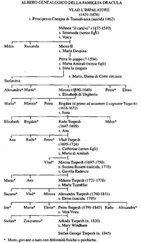While the area of the hearth filled with smoke and shouts, I rose, determined to stamp out the fire before it caught in earnest, and tried to move toward Francesca. But Caterina, already on her feet, blocked my way. Her blue eyes were wide and blank, her manner that of a mindless, terrified beast. As I pressed toward the fire and she away, she gave my shoulders such a mighty shove that I staggered backward and nearly lost my footing. She ran past me, the three-legged greyhound at her heels, out the door and into the loggia.
Behind her, Bona had gotten Chiara, stiff and weeping with fright, from her chair and was herding her, Gian Galeazzo, and Ermes toward the door. With her charges safe, she moved past me, allowing me to help Francesca stamp out the woolen shawl, now a heap on the carpet, its edges burning steadily, filling the room with the smell of burning hair.
One of the maids who had been packing the duchess’s things ran forward and, with a poker, pushed the errant hearthstone—which had initiated the calamity by tumbling from the chimney and striking Francesca’s peel—back into the fireplace. A second ran up and doused both the shawl and the smoldering carpet with water from the duchess’s slop jar.
By this time, the nuts had begun to give off a scorched stink; the air grew noxious. Gasping, Francesca hurried to the window I had so recently shuttered and opened it, letting in the chimes from the nearby Certosa monastery and the freezing alpine air.
I joined the others outside in the loggia, where the window overlooking the interior courtyard had been thrown open. Gian Galeazzo’s nurse was leading him, his brother, and the still-weeping Chiara next door, to the ducal heir’s chamber in the northwest tower; the singers had all disappeared from sight. A few nervous servants had appeared in Gian Galeazzo’s doorway in response to the outcry, but seeing the danger past, they were already receding back into the tower room.
Bona remained by the loggia window, waiting to make sure I was unscathed; she clucked maternally at the sight of my coughing and steered me directly to the opening. I bared my face to the painfully cold air and filled my lungs. When my coughing finally eased, I wiped my streaming eyes and drew back to examine the duchess.
The incident had left her unharmed, but some new disaster had claimed her attention: I followed her gaze east down the long loggia and saw Caterina standing at the far end of the great hall that separated the duchess’s quarters from the duke’s.
In the yellow light cast by a wall sconce, Caterina stood profoundly still with her back to us, her normally exuberant aspect hushed, her chin lifted and head canted to one side; I was reminded of a cat that, before pouncing on a bird, pauses to listen to its song. I paused, too: a woman was screaming in terror and outrage somewhere in the opposite wing of the palace.
The five doors that led into the great hall were uncharacteristically closed, and the servants inside oddly silent. The loggia, too, had grown abruptly deserted, save for an old servant who paused to light each wall sconce with the long taper in his hand; he made his way slowly toward us from the direction of the duke’s apartments. Surely he had heard the lady’s cries; perhaps he had even seen her, struggling in the grasp of Bruno, strongest of all the duke’s bodyguards. Yet like all good servants of Galeazzo Sforza, Duke of Milan, he had learned to keep his eyes downcast, his pace steady, his expression blank as though he could not hear her ragged screams.
They emanated from the east, from the loggia in the men’s wing, and they grew ever louder as they moved toward the northeast tower, and the duke’s quarters.
Let me go, let me go!
For the love of God . . .
You there, help me! Someone, help!
I understood at once why everyone else had so efficiently departed the scene.
Caterina whirled to face us, her blue eyes avid, bright; she did not quite smirk.
“Madonna,” she called, almost gaily, to Bona. “Shall we pray?”
Bona’s dark, bovine eyes were wide with hurt. Yet she mastered her pain and, ignoring the servant and Caterina’s insolent, knowing gaze, lifted her skirts. With calm, deliberate steps and all the grace her square, portly frame allowed, she moved down the loggia, past the closed doors of the great hall, to the open entrance of the family chapel.
Caterina and I entered the chapel with her. Just inside, to our right, stood the interior door that connected the chapel to the duke’s dressing chamber. For safety and privacy, none of the duke’s rooms opened directly onto the loggia. Instead, one had to enter the chapel and from there, gain entry to the duke’s dressing chamber, which in turn led to the duke’s bedchamber, which in turn led to the duke’s private dining hall in the northeast tower. The dining hall opened onto the northernmost room of the men’s east wing, the chamber of rabbits. This sported a life-sized mural of the duke on horseback in the summer-green park, following greyhounds in pursuit of a warren of hares; the chamber opened directly onto the eastern loggia. In sum, there are only two ways to reach the duke’s suite from the common hallway: either from the chapel off the north loggia, or from the chamber of rabbits off the east.
They planned, of course, to drag the girl in through the chamber of rabbits, so that she could not be seen by anyone passing in or out of the duchess’s chambers. If a stone had not chanced to tumble from the chimney in Bona’s hearth, the duchess would have heard no one but the singers, and would have remained cheerfully unaware of the rape occurring under her husband’s roof.
The chapel smelled of hot candle wax. It was paneled in ebony wood, like the duchess’s chamber; the choir stalls were carved from the same. The room’s sole spot of color could be found in the large stained-glass window, which depicted Milan’s patron saint, Ambrose, white-bearded and stern in his golden bishop’s mitre against a garden backdrop of emerald green. The sunlight had almost disappeared, leaving the window dark and the chapel shrouded in shadow, broken only by the glow from lamps flanking the entry and tapers burning on the altar, beneath the large wooden crucifix where a bronze Christ hung, his head bowed in death. The room was hearthless, dreary, and chill; Bona believed that God paid closer attention to the prayers of the suffering, which was why she often wore a hair shirt hidden beneath her fine silk chemise. No doubt she hoped God might post some of her excessive contrition to her husband’s account.
Beneath the altar, a dozen votive candles burned, two of them for my Matteo’s safety. By the time Bona knelt at the altar and I lifted one of the burning tapers to light two new votives—one for the duke’s soul, one for his victim’s—the shrieking had stopped. I replaced the taper on the altar, then returned and knelt on the cushion next to the duchess, who smelled of rosewater and smoke.
Bona’s deep-set eyes were fast shut, her dimpled hands clasped, her lips moving silently. Her features were pinched but set; one who did not suspect her personal agony would think she was simply earnest at prayer.
Caterina did not kneel, but unabashedly pressed her ear against the door adjacent to the duke’s dressing room; she did not test it, for she knew that it would be bolted from the other side. When Caterina was still quite young, but old enough to suspect what was happening, Bona had tried to send her to her quarters for the duration. The girl disobeyed and kept escaping to the men’s wing in an effort to catch a glimpse of her father in flagrante. She was stronger, faster, and far cleverer than her nurses, with the result that Bona finally acknowledged the duke’s trangressions and brought Caterina with her to the chapel, insisting that the girl should pray for her father. But Caterina refused to waste her time.
Читать дальше












